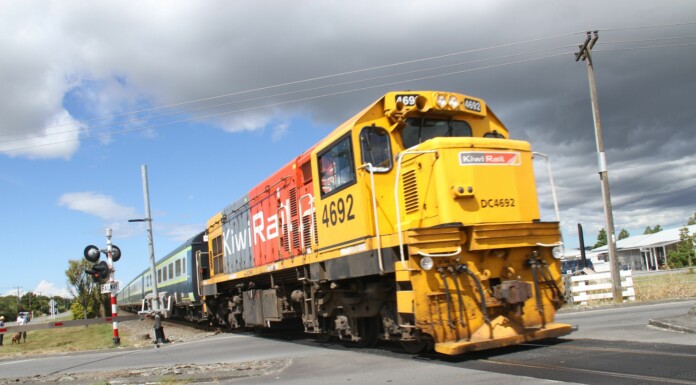Commuters relying on the region’s rail may realise that it’s quicker to walk, with more speed restrictions and delays in store for the Wairarapa line.
Despite the completion of newly laid tracks, the Greater Wellington Regional Council [GWRC] has said that due to issues with the interface between the new track and passenger carriages, restrictions and delays will prevail.
GWRC said that areas within a 16km section of track near Featherston had been laid on average 4mm narrower, a figure within KiwiRail’s normal engineering tolerances for a safe network.
However, the interaction between the track and wheels of the Wairarapa service carriages results in vibrations, which affect ride quality and premature wear and tear on the carriages themselves.
Although the vibration issue has no impact on the locomotives pulling the Wairarapa trains or KiwiRail’s freight locomotives and wagons, GWRC said that the impact on carriages meant that trains could not run at their top speed.
Instead of travelling at the intended speed of 100kmh, they are restricted to a pitiful 60kmh.
Since the new track was laid and certified by KiwiRail in December, GWRC said that passengers and staff have complained that the trains are vibrating abnormally.
Metlink and Transdev initially tested its carriages and wheels to isolate the issue before the interaction issues with the track were discovered.
Chair of GWRC Daran Ponter said that Wairarapa passengers were fed up with their second-class status.
“Wairarapa passengers have had to put up with a lot over the last few years with the promise that better times were coming,” Ponter said.
“But now they are faced with more work to get this, and other parts of the line, up to a fit standard.”
KiwiRail general manager of metros, Jon Knight, said he was aware of how frustrating the situation was for Wairarapa commuters.
“KiwiRail has been working extremely hard over the last few years, replacing old tracks so the people of Wairarapa can have improved train services,” Knight said.
“This issue is not affecting our locomotives; it seems specific to the Wairarapa passenger carriages.”
He said that KiwiRail had identified multiple options to resolve the vibration issue and was finalising the best approach.
“We have trialled replacing the clips that hold rails to the sleepers and could grind the rail to improve the interface with the Wairarapa carriages,” Knight said.
“Grinding is not an option right now, given the specialist machine produces sparks, but can be done once the fire ban is lifted.
“Another solution could be to reprofile the carriage wheels, but this would take up to 18 months to complete on the whole carriage fleet.”
GWRC’s Ponter noted that all options to remedy the issue were time-consuming and expensive, considering the situation could have been avoided in the first place.
“Greater Wellington is in urgent discussions with KiwiRail and Transdev to see what else can be done to expedite and resolve the remaining issues on the Wairarapa line.”
KiwiRail’s work on the Wairarapa line so far includes replacing 40km of rails and sleepers, replacing three bridges, replacing track through the Māoribank tunnel and upgrading level crossings.
It is currently undertaking work on the Woodside passing loop and signalling system trenching and has work scheduled for replacing track through the Remutaka Tunnel and the Waingawa passing loop, as well as platform, depot and stable upgrades.



Why was it let to rundown so much ? Bad management? Bad government policies? . You must remember bad decisions a government has comes with consequences.